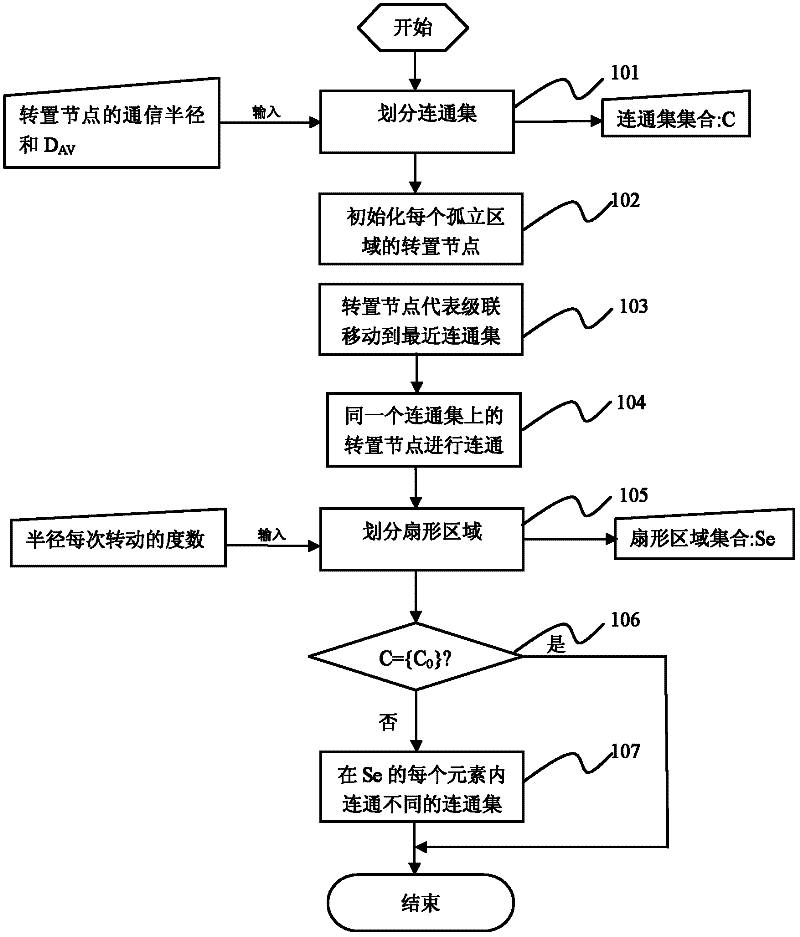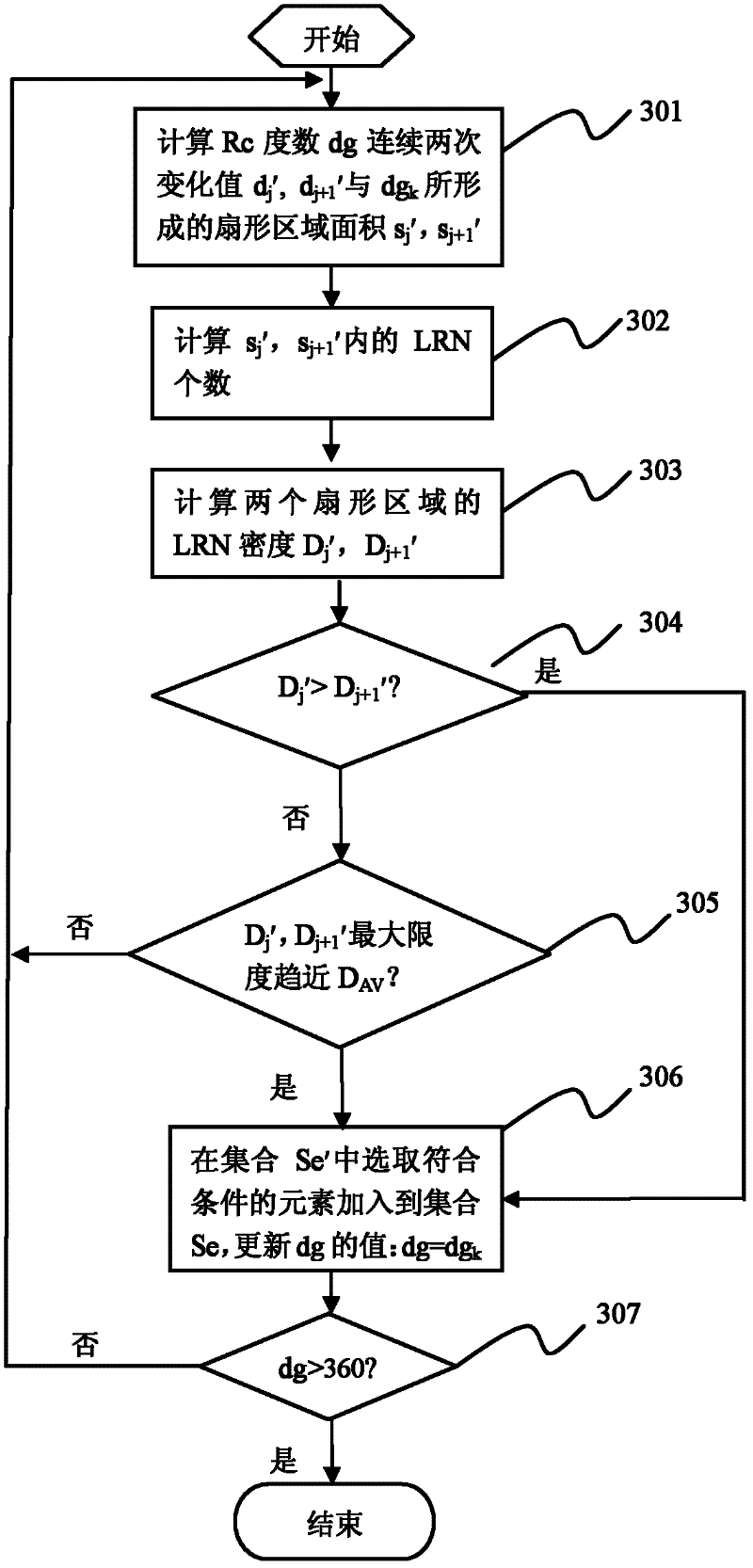Fault recovery method of wireless sensor network
A wireless sensor, fault recovery technology, applied in network topology, wireless communication, network data management and other directions, can solve the problems of lost fault recovery, long recovery time, long fault recovery time, etc., to shorten the distance of node movement, optimize Recovery process, effect of prolonging the life cycle
- Summary
- Abstract
- Description
- Claims
- Application Information
AI Technical Summary
Problems solved by technology
Method used
Image
Examples
Embodiment Construction
[0049] A fault recovery method for a wireless sensor network proposed by the present invention will be described in detail below with reference to the drawings and embodiments.
[0050] First of all, it should be noted that the abbreviation as "node" in the following content refers to transposed nodes.
[0051] Refer below Figure 1 ~ Figure 3 Introduce each step separately:
[0052] 101) Divide connected sets (Connected Set, CS). In order to move the transposed nodes of each isolated region to the CS closest to itself, the positions of these CSs need to be determined according to the distribution density of the nodes. In the present invention, CS is defined as a concentric circle with the geometric center point of the network monitoring area as the center, so determining the position of CS is to determine the radius value R of the concentric circle, wherein the initial value of R is the largest concentric circle (i.e. the farthest isolated The circle where the area is loca...
PUM
 Login to View More
Login to View More Abstract
Description
Claims
Application Information
 Login to View More
Login to View More - R&D
- Intellectual Property
- Life Sciences
- Materials
- Tech Scout
- Unparalleled Data Quality
- Higher Quality Content
- 60% Fewer Hallucinations
Browse by: Latest US Patents, China's latest patents, Technical Efficacy Thesaurus, Application Domain, Technology Topic, Popular Technical Reports.
© 2025 PatSnap. All rights reserved.Legal|Privacy policy|Modern Slavery Act Transparency Statement|Sitemap|About US| Contact US: help@patsnap.com



